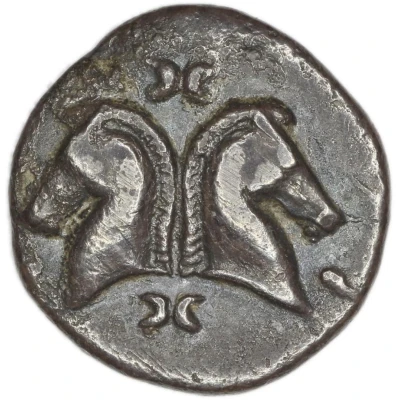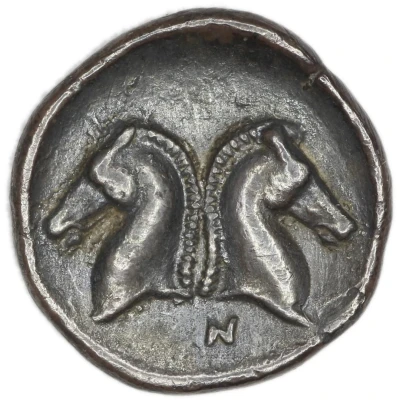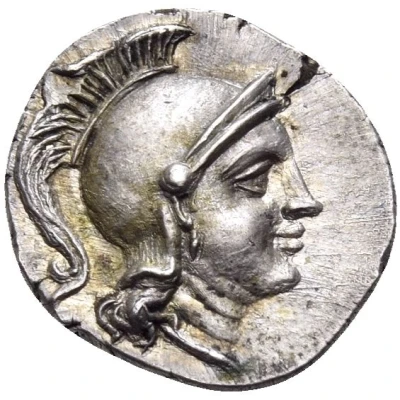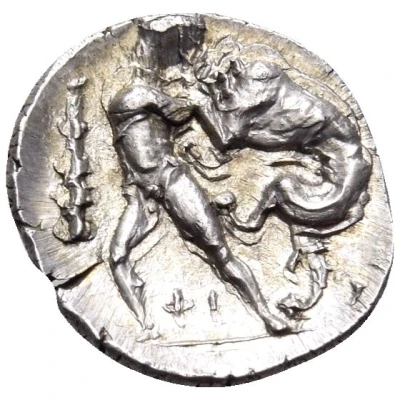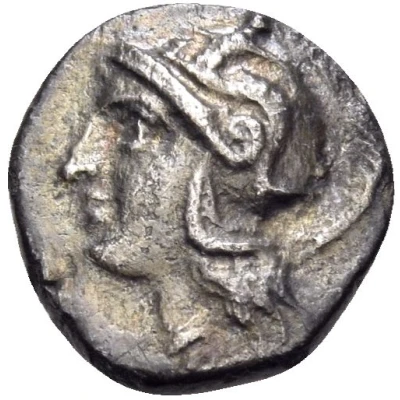
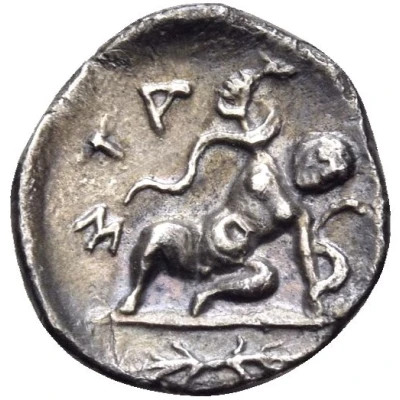

© Nomos AG
Diobol 280 BC - 228 BC
| Silver | 0.99 g | 11.5 mm |
| Issuer | Tarentum (Calabria) |
|---|---|
| Type | Standard circulation coin |
| Years | 280 BC - 228 BC |
| Value | Diobol (⅓) |
| Currency | Campanian (Italic-Achaean) drachm |
| Composition | Silver |
| Weight | 0.99 g |
| Diameter | 11.5 mm |
| Shape | Round (irregular) |
| Technique | Hammered |
| Orientation | Variable alignment ↺ |
| Demonetized | Yes |
| Updated | 2024-10-09 |
| Numista | N#417678 |
|---|---|
| Rarity index | 100% |
Reverse
The infant Herakles, nude, crouching three-quarters to right, strangling a serpent in each hand; in the field to left, monogram of MI; in the exergue, thunderbolt.
Script: Greek
Lettering: TA
Comment
Côte 570; Diobols, Series I, Type 274; HN Italy -, but cf. 1068 with Athena's head to right and without monogram.
Interesting fact
The Diobol coin was used as a form of currency in the ancient Greek city of Tarentum, which is now located in Calabria, Italy. The coin features an image of a mythical creature called a "Taras," which is a dolphin-riding boy, on one side, and an inscription of the city's name on the other. The use of this coin as currency in Tarentum dates back to the 4th century BC, making it one of the oldest coins in the world.
